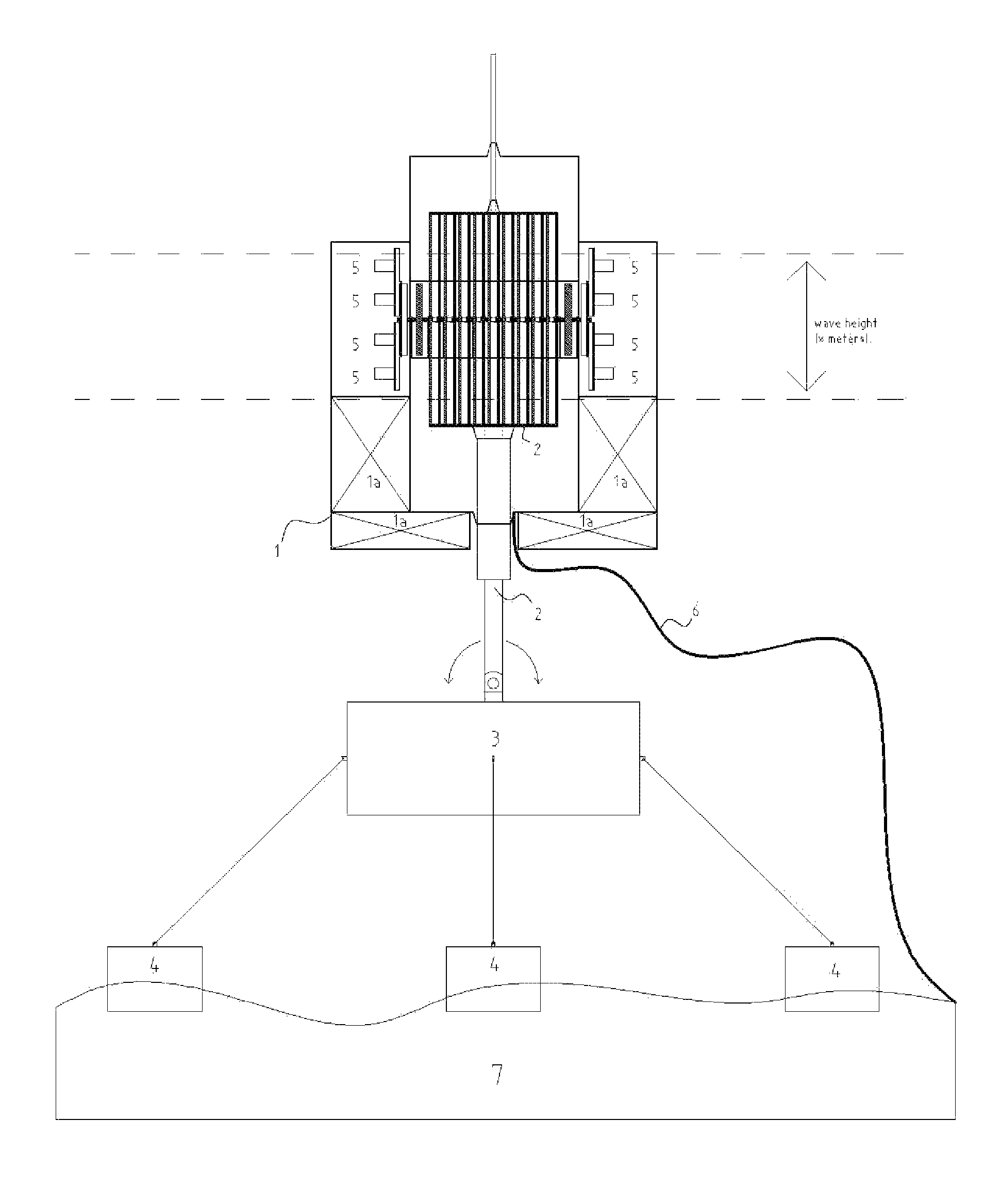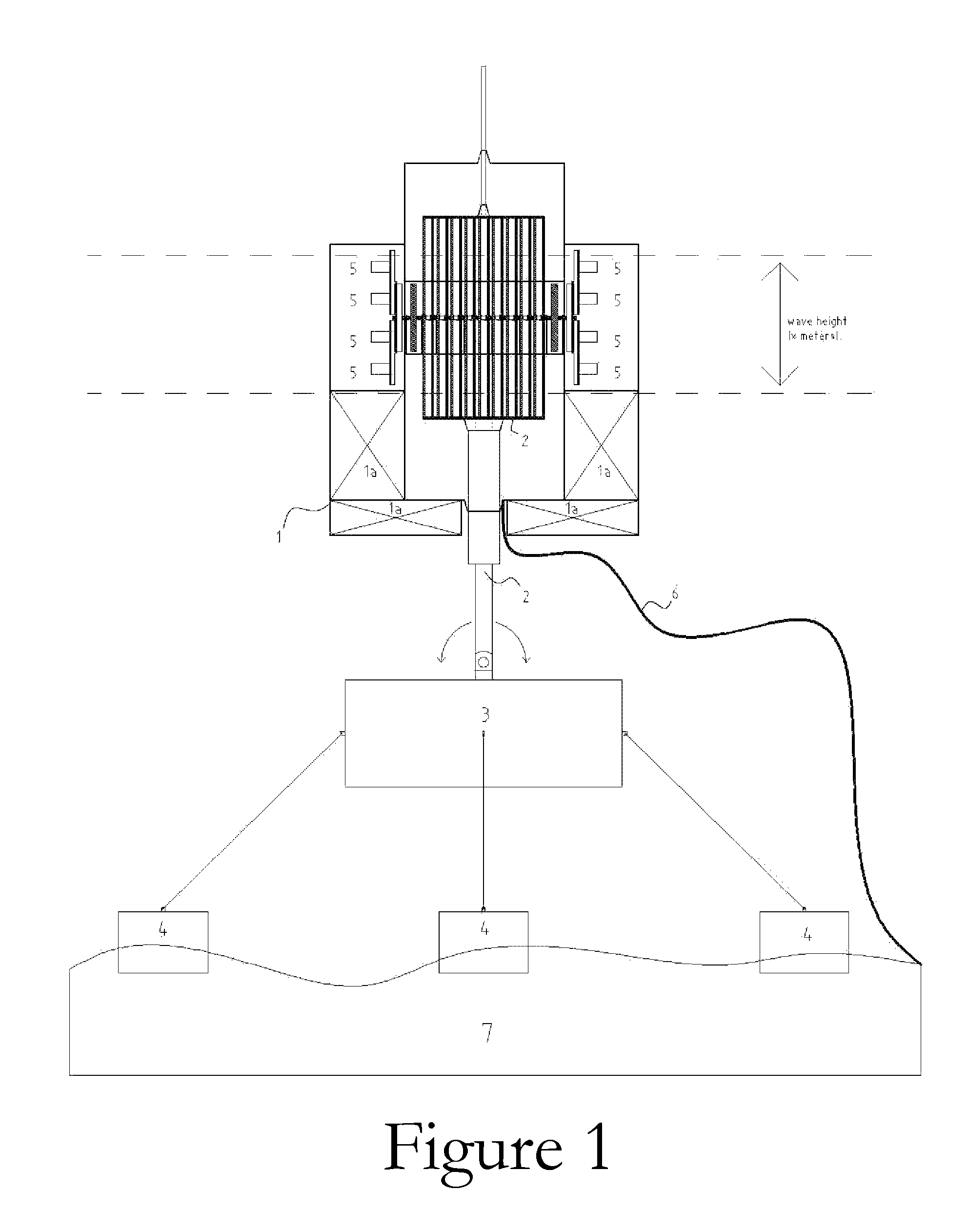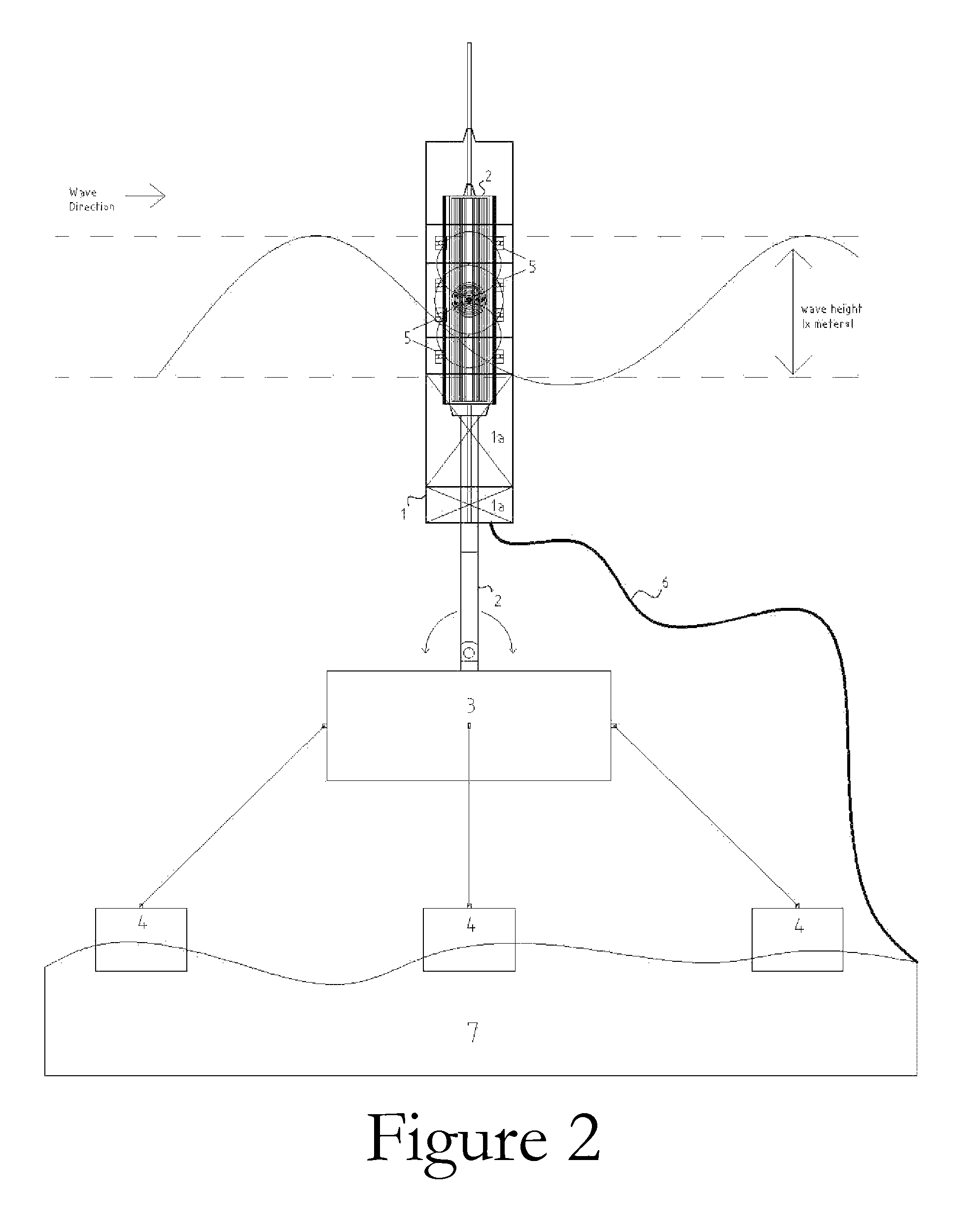Wave-power system and method for generating energy at constant rotational speed at variable significant wave heights and periods
a wave power system and wave energy technology, applied in the direction of electric generator control, machines/engines, mechanical equipment, etc., can solve the problems of increasing oil prices, major challenges, and carbon dioxide emissions to be reduced
- Summary
- Abstract
- Description
- Claims
- Application Information
AI Technical Summary
Benefits of technology
Problems solved by technology
Method used
Image
Examples
Embodiment Construction
[0094]The following Figures are not to scale. The actual dimension and / or shape of each of the device components may vary. Only important details of the device are shown, however one of ordinary skill in the art can appreciate how the overall device may be constructed, without undue experimentation. The device may be constructed using standard ship building methods and materials or any appropriate materials and methods to allow efficiency and survivability.
[0095]FIG. 1 is a general front view of the wave energy converter. FIG. 2 is a general side view of the wave energy converter of FIG. 1. Note the movement and direction of the waves as illustrated in FIG. 2. Referring to FIGS. 1 and 2, the apparatus is composed of a water-tight hull structure 1 which acts as a floating portion of the device and moves up and down with passing waves. Hull structure 1 has ballast tanks 1a in the lower part. A fork-like rod system 2 acts as the fixed member of the device, not moving up and down with p...
PUM
 Login to View More
Login to View More Abstract
Description
Claims
Application Information
 Login to View More
Login to View More - R&D
- Intellectual Property
- Life Sciences
- Materials
- Tech Scout
- Unparalleled Data Quality
- Higher Quality Content
- 60% Fewer Hallucinations
Browse by: Latest US Patents, China's latest patents, Technical Efficacy Thesaurus, Application Domain, Technology Topic, Popular Technical Reports.
© 2025 PatSnap. All rights reserved.Legal|Privacy policy|Modern Slavery Act Transparency Statement|Sitemap|About US| Contact US: help@patsnap.com



